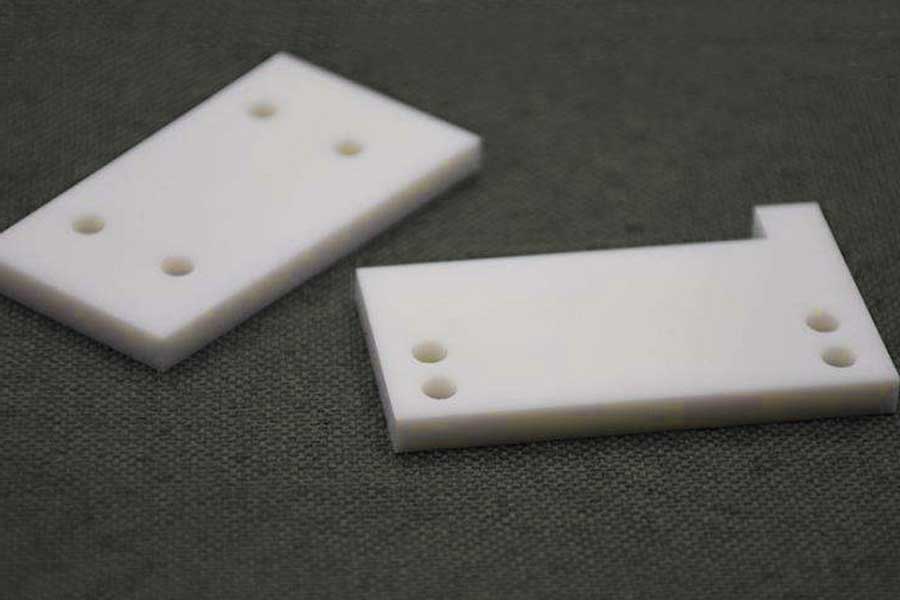Zirconia toughened alumina is an important ceramic material made up of alumina and zirconia and is commonly abbreviated in the industry as ZTA. The material combines both the strength and efficiency of zirconia and alumina, both of which are strong ceramic materials individually.
In terms of composition, zirconia toughened alumina (ZTA) can be described as a composite ceramic material consisting of zirconia (zirconium oxide) grains in an alumina (aluminum oxide) matrix. The chemical formula of the material is Zr-Al2O3. ZTA has superior mechanical strength and wear resistance, making it a better preferred ceramic material compared to zirconia or alumina.
The material is also known for its chemical inertness at room temperature and high hot hardness. All of these — and more properties — make zirconia toughened alumina, a highly sought-after abrasive material in many industrial processes.
Production of Zirconia Toughened Alumina
Zirconia toughened alumina fabrication mostly involves the stress-induced transformation of fine tetragonal zirconia particles. The uniform particle size and distribution of the particles brings about the extreme strength, toughness and resistance of the final product to thermal shock. These properties make zirconia toughened alumina highly suitable for application in a wide range of processes.
In 2002, a new batch-processed zirconia toughened alumina (ZTA) ceramic was developed by Insley and co-workers. The new ZTA ceramic was found to consist of 75% alumina and 25% zirconia without any mixed oxides.
The phenomenon that increases the fracture toughness of ZTA is a process called transformation toughening. When placed under stress, the zirconia particles typically change their crystal structure to a monoclinic structure from a tetragonal shape, causing a volume expansion that compresses the surrounding crack in the alumina matrix.
How Profitable is Zirconia Toughened Alumina?
The main benefit of Zirconia Toughened Alumina (ZTA) is the additional strength and toughness over alumina with a lower cost than zirconia (YTZP, MSZ, CSZ). Studies have also shown that the combination of alumina and 10-20% zirconia provides a much higher strength, toughness, hardness, and wear resistance than alumina alone. At a much lower cost, ZTA produces an overall 20-30% increase in strength than using zirconia.
Because of its relatively high strength and toughness, ZTA is mostly used in any application where structural strength is needed beyond the standard alumina properties.
Properties of Zirconia Toughened Alumina
ZTA has a wide range of properties, giving its importance in an array of applications. The following are the core properties of ZTA:
Zirconia toughened alumina has a density of about 4.1-4.38 g/cm3 and a hardness of approximately 1750-2100 Knoop. With an elasticity of 45-49 x 10^6 psi, fracture toughness of 5-7 MPa m^½, and flexural Strength of 100-145 ksi, ZTA is easily considered for application in extreme stress conditions. Its coefficient of thermal expansion is 8.0-8.1 x 10^-6 1/C and it has a maximum working temperature of 1650 °C.
Applications of Zirconia Toughened Alumina
Recently, there have been many uses for ZTA in many applications, such as valve seals, bushing, pump components, joint implants, wire bonding capillaries, etc.. In the medical industry, ZTA serves as a ceramic that can be used in joint replacement and rehabilitation.
The high wear resistance of ZTA helps to create high-performance implants. Its high strength and corrosion resistance enables it to withstand heavy loads without bulging due to degradation. This is why ZTA is used in many load-bearing applications.
The toughness of the material also makes it useful in cutting tools. Note that ZTA and other alumina are usually used in metal cutting applications. It is also used in abrasive applications like sandblasting.
Finally, ZTA is used in fabrication industrial crucibles, refractory tubes, lab ware, and some engine components.
Conclusion
Zirconia toughened alumina is an essential ceramic material comprising alumina and zirconia. It is commonly known as ZTA in the industry, but much more for its excellent mechanical strength and wear resistance. The material combines both the strength and efficiency of zirconia and alumina.
The high hardness, wear resistance, chemical inertness, high hot hardness, moderate heat resistance and compressive strength of ZTA make it suitable for application in many industrial manufacturing processes, such as manufacturing of cutting tools inserts, standoffs, insulators, probe bodies, bushings, instruments, sensor bulbs, analytical instrument columns, impellers, etc.

